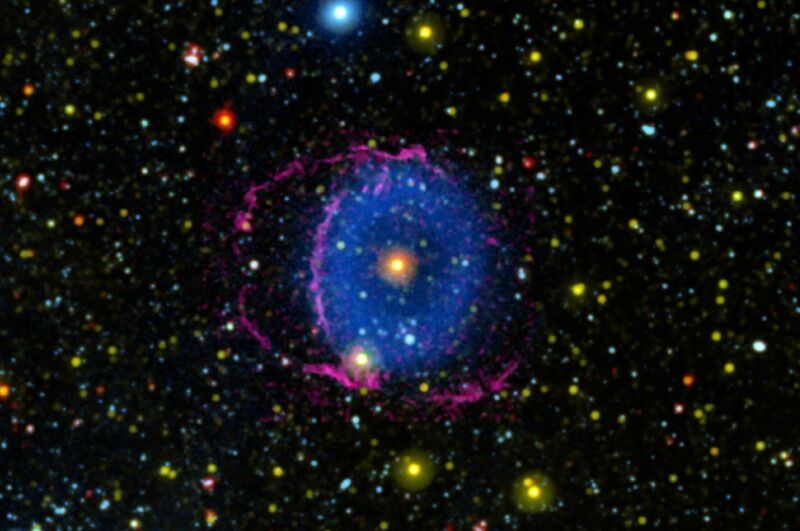When stars collide: Solving the 16-year mystery of the Blue Ring Nebula

Enlarge / The Blue Ring Nebula was discovered by the Galaxy Evolution Explorer, or GALEX, in 2004, but it took 16 years of observations with other telescopes, both on the ground and in space, to finally pin down its cause (credit: NASA/JPL-Caltech/M. Seibert (Carnegie Institution for Science)/K. Hoadley (Caltech)/GALEX)
It took 16 long years, but astronomers have finally solved the puzzle of the mysterious Blue Ring Nebula, according to a new paper published in Nature. First spotted in 2004, the star with an unusual ultraviolet ring appears to be the result of two stars merging, spewing out debris in opposite directions and forming two glowing cones. It appears to us as a blue ring because one of those cones points directly at Earth. That makes this the first observation of a rare stage of stellar evolution, just a few thousand years into the process, akin to capturing a baby's first steps.
The story begins with the so-called GALEX (Galaxy Evolution Explorer) mission, an all-sky survey in the ultraviolet band of the electromagnetic spectrum that was in operation from 2003 to 2013. Caltech physicist Chris Martin was the PI for GALEX when his team spotted an unusual object: a large, faint blob of glowing gas with a star at its center. GALEX makes measurements in both the far UV and near UV bands, but while most objects GALEX observed showed up in both bands, the stunning blue ring around the star dubbed TYC 2597-735-1 only showed up in the far UV.
Intrigued, Martin decided to investigate further, confident that he and his team could come up with a viable explanation by the end of the year. He thought the Blue Ring Nebula was most likely a supernova remnant or perhaps a planetary nebula formed from the remains of a star roughly the size of our Sun, even though these typically emit light in multiple wavelengths outside the UV range. But it turned out to be a far knottier problem.
Read 15 remaining paragraphs | Comments